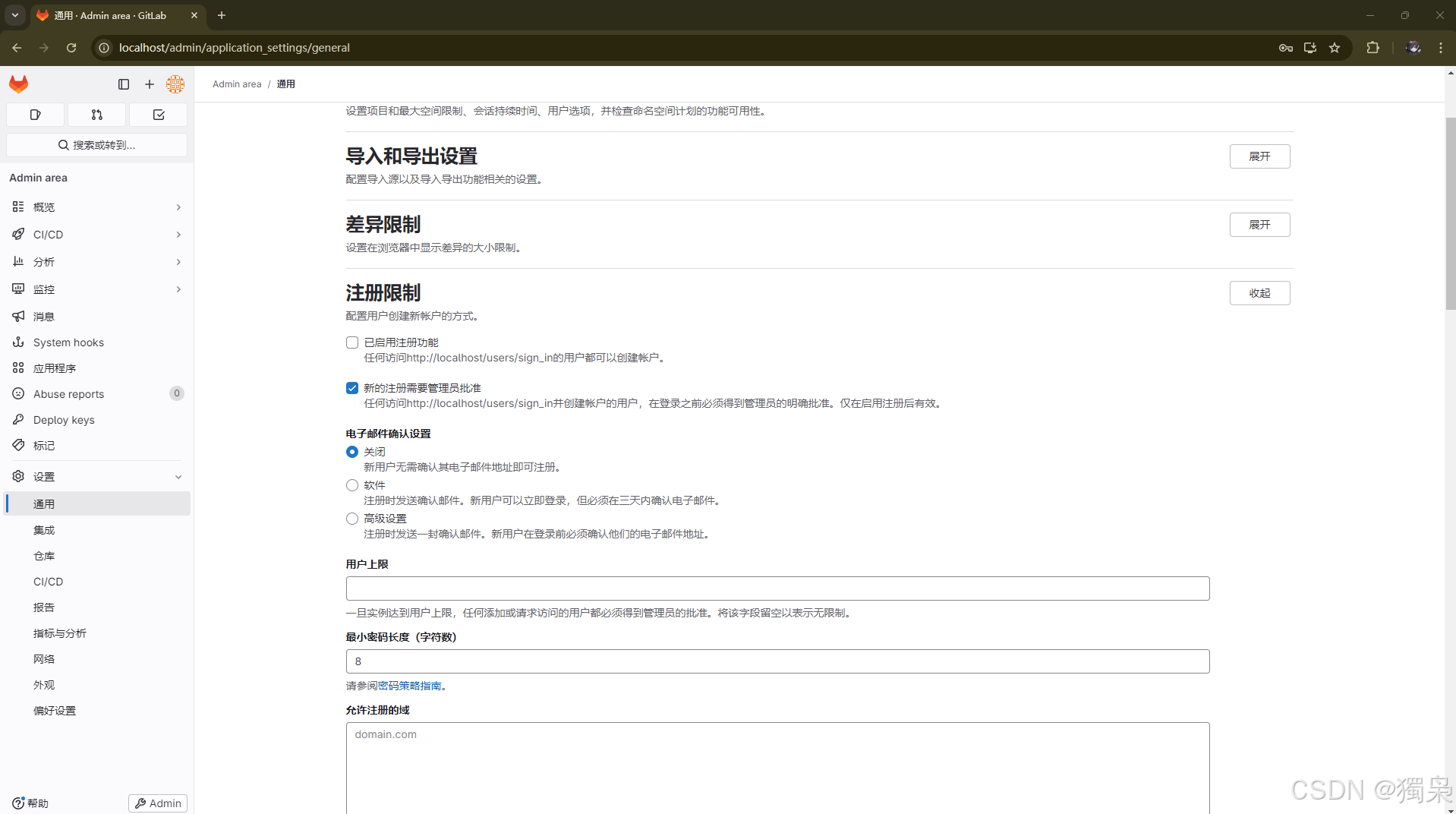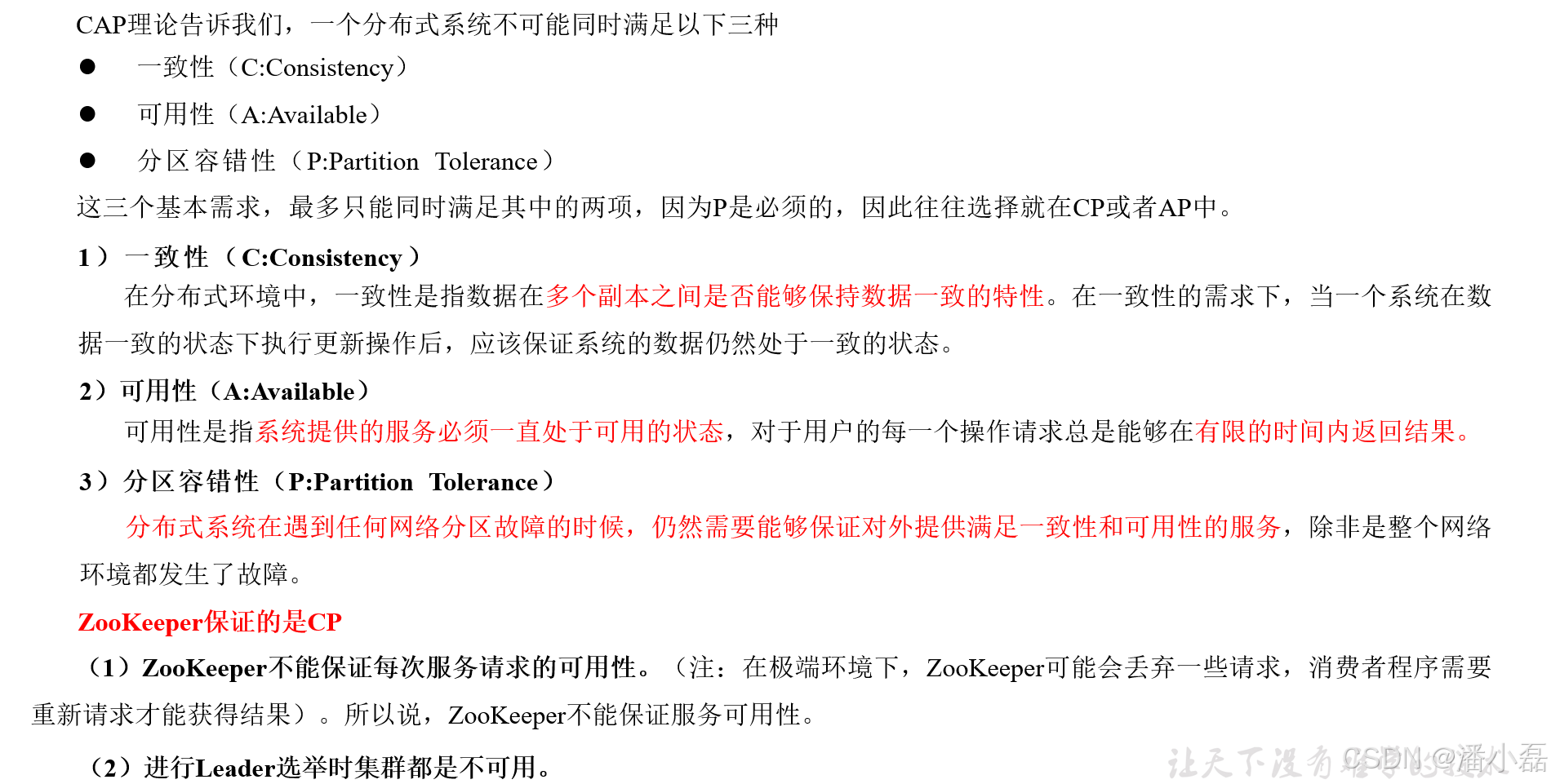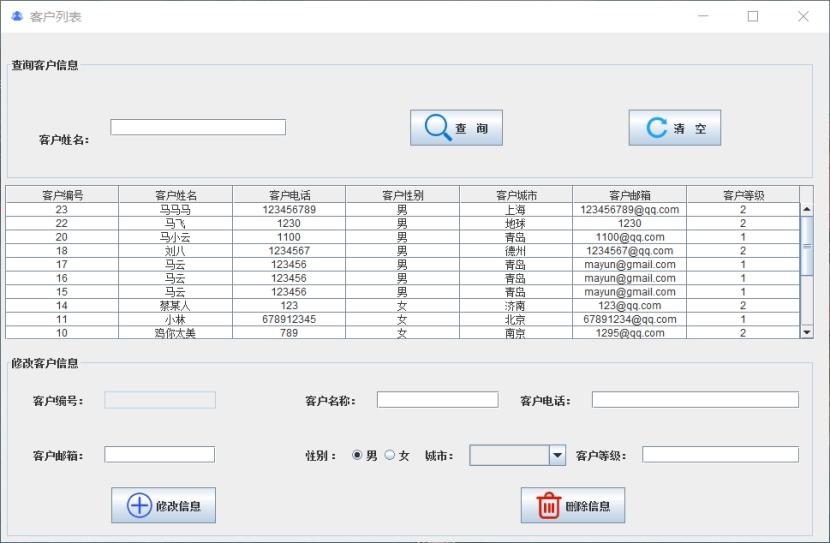助动词的分类及其缩略形式
助动词的分类及其缩略形式
- 1. 助动词 (auxiliary verb)
- 2. 基本助动词 (primary auxiliary)
- 2.1. 基本助动词 `be`、`do` 和 `have`
- 2.2. 实义动词 `be`、`do` 和 `have`
- 3. 情态助动词 (modal auxiliary)
- 3.1. `情态助动词`取代`情态动词`
- 4. 半助动词 (semi-auxiliary)
- 4.1. 不能与 `it ... that-clause` 结构转换
- 4.2. 可以与 `it ... that-clause` 结构转换
- 5. 助动词的缩略形式
- 5.1. 否定缩略形式
- 5.2. 肯定缩略形式
- References
英语动词按照其在构成的动词词组中所起的作用分为主动词 (main verb) 和助动词 (auxiliary) 两大类。动词词组是以主动词为中心词的词组,它可以仅由一个主动词构成,称为简单动词词组 (simple verb phrase)。
简单动词词组 (simple verb phrase):
He buys lemonade every time he goes shopping.
The workers received a raise last year.
lemonade /ˌleməˈneɪd/:n. 柠檬水,柠檬饮料,柠檬味汽水,一杯 (或一瓶) 柠檬饮料
raise /reɪz/:vt. 增加,提高 (数量、水平等),提升,引起,抚养,举起,筹款,饲养,提起,提及,终止,解除 (约束),(使) 直立,站立,使起死回生,使自乘 (若干次),与 ... 取得联系,和 ... 通话,在 (另一玩牌人) 基础上加注 n. 上升,加薪,高地
动词词组也可由一个或一个以上的助动词加主动词构成,称为复杂动词词组 (complex verb phrase)。
复杂动词词组 (complex verb phrase):
She is visiting Copenhagen.
They have been taking music lessons.
You should have read the book.
He needn’t have been waiting in the rain.
主动词构成动词词组的语义核心,它表示动词词组的基本意义,主动词又称为实义动词 (notional verb)。
实义动词的特点:
- 从词义的角度来看,实义动词具备完整的词汇意义。
- 从在谓语部分中的作用的角度来看,实义动词可以单独充当句子的谓语动词。
英语中除了助动词 (包含情态助动词) 以外,其他的均为实义动词。
助动词的语法功能是协助主动词表示不同的语法意义或情态意义,例如表示某一动作正在进行或已经完成,应该做某事或不应该做某事等意义。
1. 助动词 (auxiliary verb)
句子可分为主语部分和谓语部分,谓语部分的核心是谓语动词。
谓语动词本身往往无法独立表达某些语法概念,需要其它词的辅助构成动词词组,这些辅助词就是助动词,而那些被辅助的谓语动词称作主要动词 (main verb)。
助动词不能单独充当句子的谓语动词,它必须和实义动词连用,以帮助构成各种时态、语态、语气、否定和疑问等。

eat 动词表示过去时为 ate,表示第三人称现在时为 eats,表示将来时为 will eat,这里的 will 是用来构成将来时的助动词。助动词 will 本身是不能独立表达完整句意的,必须加上实义动词。
- Cambridge Dictionary
https://dictionary.cambridge.org/
auxiliary verb: noun
a verb that gives grammatical information that is not given by the main verb of a sentence:
has is an auxiliary verb in the sentence “She has finished her book”.
- Longman Dictionary of Contemporary English
https://www.ldoceonline.com/
auxiliary verb: noun, countable
a verb that is used with another verb to show its tense, person, mood etc.
In English the auxiliary verbs are be, do, and have (as in “I am running”, “I didn’t go”, “they have gone”), and all the modals.
mood /muːd/:n. 情绪,心情,气氛,(动词的) 语气,氛围,坏脾气,表达语气的动词屈折变化,坏心境
modal /ˈməʊdl/:n. 情态动词 adj. 模式的,形式的,情态的,语气的
An auxiliary verb (abbreviated aux) is a verb that adds functional or grammatical meaning to the clause in which it occurs, so as to express tense, aspect, modality, voice, emphasis, etc.
助动词缩写为 aux。
英语动词可分为主动词 (main verb) 与助动词 (auxiliary) 两大类。助动词用来配合主动词构成复杂动词词组,助动词的语法功能是协助主动词表达不同的语法意义或情态意义。
modality /məʊˈdæləti/:n. 方式,形式,形态,情态,样式,感觉形式,感觉模式
clause /klɔːz/:n. 条款,子句,从句,分句
finite /ˈfaɪnaɪt/:adj. 有限的,限定的,有限制的 n. 有限,有限物
infinite /ˈɪnfɪnət/:adj. 无限的,极大的,无穷尽的,无法衡量的 n. 上帝,无限的事物,无穷尽的事物
infinitive /ɪnˈfɪnətɪv/:n. (动词的) 不定式 adj. (不受人称、数、时态限制的) 动词不定式的
An example is the verb have in the sentence “I have finished my lunch”. Here, the auxiliary have helps to express the perfect aspect along with the participle, finished.
在这里,助动词 have 与分词 finished 一起表达完成时。
Auxiliary verbs are also called helping verbs, helper verbs, or (verbal) auxiliaries.
助动词又称辅助动词。
perfect /ˈpɜːfɪkt , pəˈfekt/:adj. 完美的,最佳的,完备的,优秀的,准确的,全部的,(动词) 完成时的,完成体的,地道的,完全正确的 vt. 使完善,使完美,使完备 n. (动词的) 完成时 (态)
participle /pɑːˈtɪsɪpl/:n. 分词 (现在分词或过去分词)
verbal /ˈvɜːbl/:adj. 口头的,言语的,文字的,动词的,词语的 n. 口供,非限定动词
助动词可以分为三类:基本助动词 (primary auxiliary)、情态助动词 (modal auxiliary) 和半助动词 (semi-auxiliary)。
2. 基本助动词 (primary auxiliary)
基本助动词只有 be、do 和 have,它们分别具有各种变化形式。需要注意的是,它们同时也可以作为实义动词。
助动词的特点:
- 从词义的角度来看,基本助动词没有词汇意义,只在动词词组中起语法作用或者说只表示语法意义。
- 从在谓语部分中的作用的角度来看,基本助动词不能单独充当句子的谓语动词,它必须和实义动词连用,以帮助构成各种时态、语态、语气、否定和疑问等。
2.1. 基本助动词 be、do 和 have
| 基本助动词 | 变化形式 |
|---|---|
be | am, am not, is, is not, isn’t, was, was not, wasn’t, are, are not, aren’t, were, were not, weren’t … |
do | do, do not, don’t, does, does not, doesn’t, did, did not, didn’t … |
have | have, have not, haven’t, has, has not, hasn’t, had, had not, hadn’t … |
- 助动词
be通常用来协助主动词构成进行时态或被动语态
I am studying grammar. 助动词,帮助构成进行时态
He is sleeping. 助动词,帮助构成进行时态
He is playing football. 助动词,帮助构成进行时态
I was cheated. 助动词,帮助构成被动语态
They were seen. 助动词,帮助构成被动语态
- 助动词
do通常用来协助主动词表示否定意义或构成疑问句
I do not like English. 助动词,帮助构成否定
You did not understand. 助动词,帮助构成否定
My wife doesn’t know Russian. 助动词,帮助构成否定
What did she give to Halleck for his birthday? 助动词,帮助构成疑问
Do you like English? 助动词,帮助构成疑问
Do you like it? 助动词,帮助构成疑问
- 助动词
do可用来加重语气
I do think you’ll have a hard job convincing him.
You do look well.
He did annoy everyone that evening.
Do come and join us.
- 助动词
have通常用来协助主动词构成完成时态或完成进行时态
I have studied English for three years. 助动词,帮助构成完成时态
They have understood. 助动词,帮助构成完成时态
Joan has seen that movie.
I have been working here for 20 years.
2.2. 实义动词 be、do 和 have
be、do 和 have 可以用作实义动词。当作为实义动词时,be、do 和 have 可以单独做谓语动词。注意区分 be 作为系动词和助动词,do 作为实义动词和助动词,have 作为实义动词和助动词。
| 例句 | 词义 | 词性 |
|---|---|---|
| I am a student. | 是 | 系动词,用作谓语动词 |
| She is the boss. | 是 | 系动词,用作谓语动词 |
| I am studying grammar. | 无词义 | 助动词,帮助构成进行时态 |
| I have two brothers. | 有 | 实义动词,用作谓语动词 |
| I have studied English for three years. | 无词义 | 助动词,帮助构成完成时态 |
| I often do my homework at home. | 做 | 实义动词,用作谓语动词 |
| I do not like English. | 无词义 | 助动词,帮助构成否定句 |
3. 情态助动词 (modal auxiliary)
情态助动词表示情态意义,其过去时形式并不一定就表示过去时间。情态助动词不能重叠使用,随后的主动词无一例外地是不带 to 的不定式即动词原形。
情态助动词有 can / could,may / might,will / would,shall / should,must,ought to,dare / dared,need,used to。
情态助动词的特点:
- 从词义的角度来看,情态助动词有别于基本助动词。情态助动词有自身的词汇意义,例如表示可能、建议、愿望、必要、允许、能力、怀疑等,表示说话者对某种行为或状态的看法或态度。
- 从在谓语部分中的作用的角度来看,与基本助动词一样,情态助动词不能单独充当句子的谓语动词,必须和实义动词一起使用。
It may snow before nightfall.
Brenda grew up in Naples. She must know how to speak Italian.
Stainless steel will resist corrosion.
Would you let me use your pen a minute?
When I lived at Del Mar, I used to take a long walk along the footpath under the pine trees.
If she became a movie star, she could afford a new home.
3.1. 情态助动词取代情态动词
在《新编英语语法教程》中,我们釆用情态助动词这一术语,而不用情态动词这一较老的术语。
情态动词 (modal verb) 原系 H. Poutsma 的用语,它包括 can, could, may, might, must, will, would, shall, should, ought to, used to, need, dare, dared 十四个词项。在我国,上述词项历来被视为助动词,但自 20 世纪 50 年代后期,我国出版的某些英语语法书 (也许是受苏联某些英语语法著作的影响),开始釆用情态动词这一术语,直到现在。
为什么在较老的语法书中作者要用情态动词这一术语,而不视之为助动词呢?
这与他们对助动词涵义的不同理解有关。在《英语语法手册》中:助动词一般无词义,不能单独作谓语动词。助动词在句中的作用在于帮助构成各种时态、语态、语气、否定和疑问结构等。《英语语法手册》认为助动词都是没有词义的,而上述词项都可表示情态意义,因而不能算是助动词,故称为情态动词。
有无词汇意义是否就是划分助动词与主动词的关键?
我们的回答是否定的。我们认为助动词的主要语法特征是不能独立充当谓语动词,它在句中的作用是协助主动词构成复杂动词词组,表示各种意义。
《新编英语语法教程》把助动词分为三大类:基本助动词 (primary auxiliary)、情态助动词 (modal auxiliary) 和半助动词 (semi-auxiliary)。基本助动词 be, do, have 是没有词义的,而情态助动词和半助动词则是有词义的。之所以叫做情态助动词是由于它本身能表示情态意义,以区别于那些没有词义的基本助动词。如果说它们是情态动词,又说这种动词之后要跟动词原形,似难以自圆其说。
一种分类认为,情态动词是助动词的一种,可称作情态助动词。因为它们都辅助主动词,同时不能单独做谓语动词。
另一种分类认为,情态动词和助动词是并列的。因为助动词只起辅助作用,没有词汇意义,而情态动词有实际意义的词应当被区分开来。
4. 半助动词 (semi-auxiliary)
半助动词 (semi-auxiliary) 是语法作用上介于主动词与助动词之间的,且能表示情态意义的语法结构,故又称为半情态助动词 (semi-modal)。
- 从形态上看,半助动词可分为三类:一类是以
be为其中心成分;一类是以have为其中心成分;一类是以seem等为其中心成分。 - 从能否与
it ... that-clause结构进行转换看,又可分为两小类:第一小类不能与it ... that-clause句型转换,而第二小类可作这样的转换。
4.1. 不能与 it ... that-clause 结构转换
- be about to do something
if someone is about to do something, or if something is about to happen, they will do it or it will happen very soon
to be going to do something very soon
即将做某事,马上做某事,正打算做某事
We were just about to leave when Jerry arrived.
I was about to leave when Mark arrived.
Work was about to start on a new factory building.
- be able to do something
to have the necessary physical strength, mental power, skill, time, money, or opportunity to do something
to have the skill, strength, knowledge etc needed to do something
to be in a situation in which it is possible for you to do something
有能力做某事
I’ve always wanted to be able to speak Japanese.
I’m sorry that I wasn’t able to phone you yesterday.
- be apt to do something / be apt to be something
to have a natural tendency to do something SYN "tend to"
to be likely to do something or to often do something
易于做某事,倾向于做某事
Some of the staff are apt to arrive late on Mondays.
Cast iron (生铁) is apt to break.
- be going to do something / be going to be something
to intend to do or be something in the future
to be certain or expected to happen in the future
打算做某事,计划去做某事,将要成为,打算成为
I’m going to be a famous pop star when I’m older.
They’re going to have a baby in the spring.
She’s going to have so many staff to manage.
- be liable to do something
likely to do or say something or to behave in a particular way, especially because of a fault or natural tendency SYN `likely`
易于做某事
The car is liable to overheat on long trips.
He was liable to just show up without warning.
We are all liable to make mistakes occasionally.
- be sure to do something
used to tell someone to remember to do something
提醒和警示他人或自己务必做某事
She’s sure to win.
Be sure to ring and let us know you’ve got back safely.
I want to go somewhere where we’re sure to have good weather.
- be supposed to do something / be supposed to be something
used to say what someone should or should not do, especially because of rules or what someone in authority has said
used to say what was or is expected or intended to happen, especially when it did not happen
used to say that something is believed to be true by many people, although it might not be true or you might disagree
to have to
to have a duty or a responsibility to
to be intended to
应该做某事,被期望做某事
We’re supposed to check out of the hotel by 11 o’clock.
I’m not supposed to tell anyone.
The meeting was supposed to take place on Tuesday, but we’ve had to postpone it.
Mrs Carver is supposed to have a lot of money.
- be willing to do something
to be happy to do something if it is needed
愿意做某事,乐意做某事
How much are they willing to pay?
If you’re willing to fly at night, you can get a much cheaper ticket.
- had better do something / had best do something
If you had better/best do something, you should do it or it would be good to do it
used to give advice about what someone should do, or to say what you should do or need to do
used to threaten someone
used to suggest an action or to show that it is necessary
应该做某事,最好做某事
I’d better go and get ready.
You’d better keep your mouth shut about this.
You’d better be working harder when the boss comes back.
I thought I’d best have your opinion first.
- be due to do something
expected to happen or arrive at a particular time
按计划、约定或预期应该做某事
The team are due to fly to Italy next month.
His new book is due to be published next year.
- be obliged to do something
to make it necessary for someone to do something
不得已而做某事
As a result of falling profits, we were obliged to close the factory.
James will be obliged to resign.
- get to do something
to have an opportunity to do something
to begin to do or be
开始做某事,着手做某事
I never get to see her now that she’s moved to California.
You’re getting to be just like your mother.
How did you get to know that I was here?
- come to do something
to start to do something
开始做某事,着手做某事
I’ve come to like her over the months.
How did you come to know where she is living?
- fail to do something
未能做某事
Doctors failed to save the girl’s life.
He never fails to write to his mother every week.
- tend to do something
if something tends to happen, it happens often and is likely to happen again
倾向于做某事,往往会做某事,易于做某事
People tend to need less sleep as they get older.
My car tends to overheat in the summer.
- have to do something / have got to do something
to need to or be forced
used to say that something must be true
必须做某事,不得不做某事
I have to go to Vermont tomorrow.
We’ve got to go.
Do we have to finish this today?
Jackie’s ill so they’ve had to change their plans.
- be to do something
used to talk about arrangements for the future
used to give an order or to tell someone about a rule
used to say or ask what someone should do or what should happen
used to ask how something can be done
按计划或安排要做的事
You are to wait here in this room until I return.
I was to have seen him last Wednesday but he didn’t come.
- be duty bound to do something
to have to do something because it is your duty
有义务做某事,有责任干某事
We are duty bound to investigate the matter.
- feel bound to do something / be bound to do something
to feel that you ought to do something, because it is morally right or your duty to do it
有义务做某事,觉得有责任做某事
Ian felt bound to tell Joanna the truth.
Don’t lie to her. She’s bound to find out.
When you are dealing with so many patients, mistakes are bound to happen.
You are bound to succeed.
- feel honour bound to do something / be honour bound to do something
to feel that it is your moral duty to do something
觉得在道义上应该做某事
We felt honor bound to attend their wedding.
4.2. 可以与 it ... that-clause 结构转换
- turn out to be something
= it turns out that / it turns out
to happen in a particular way, or to have a particular result, especially one that you did not expect
结果是,原来是,证明是 (带有一定的惊讶或意外的语气,说话者对所揭示的情况感到惊讶或意外)
It turned out that I was wrong.
It turned out to be a fine day.
As it turned out, he passed the exam quite easily.
- seem to do something
= it seems that / it seems
= it would seem that / it would seem
used to make what you are saying less strong or certain, and more polite
似乎要做某事,好像要做某事
I seem to have lost my car keys.
It would seem that someone left the building unlocked.
Things far off seem to be small.
It seems that he is enjoying himself.
= He seems to be enjoying himself.
- happen to do something
= it happens that
if you happen to do something, you do it by chance
碰巧做某事
I happened to see James in town.
She happened to be met in the street by the boy.
It happens that he is a teacher of English.
恰好他是个英语教师。
It happens that I have had some nasty experiences in dealing with him.
= I happen to have had some nasty experiences in dealing with him.
- chance to do something
= It chanced that
to happen in a way which is not expected and not planned
有机会做某事
She chanced to be passing when I came out of the house.
It chanced that we both went to Paris that year.
I chanced to be out when she called.
- appear to do something
= it appears that / it appears
used when saying what you think has happened or is true
似乎要做某事
The research appears to show that the drug is effective in most cases.
It appears that all the files have been deleted.
He appears to have many friends.
It appears that he has many friends here.
= He appears to have many friends here.
- likely to do something / likely to be something
= it is likely that / it is likely
可能干某事
Children who live in the country’s rural areas are very likely to be poor.
Are we likely to arrive on time?
rural /ˈrʊərəl/:adj. 农村的,乡村的,似农村的
- unlikely to do something
= it is unlikely that / it is unlikely
not likely to happen
不可能干某事
The weather is unlikely to improve over the next few days.
He is unlikely to win the race.
It is likely / unlikely that they will succeed.
= They are likely / unlikely to succeed.
- be certain to do something
= it seems certain that
if something is certain, it will definitely happen or is definitely true
一定会做某事
It seemed certain that the other team would win.
He is certain to come.
5. 助动词的缩略形式
英语中有以下 24 个助动词有缩略形式 (contracted form):
am, is, are, was, were, have, has, had, do, does, did, shall, should, will, would, can, could, may, might, must, ought to, need, dare, used to
这里所说的缩略形式主要指基本助动词和情态助动词的缩略形式。鉴于动词 be 和 have 的某些形式作主动词时也能有缩略形式,且较常见,有其实用性,将附带一起处理。
5.1. 否定缩略形式
英语中有以下 23 个助动词有否定缩略形式 (contracted form):
| 基本助动词 | 分开写 | 缩写 |
|---|---|---|
| am | am not | 无 |
| is | is not | isn’t |
| was | was not | wasn’t |
| are | are not | aren’t |
| were | were not | weren’t |
| do | do not | don’t |
| does | does not | doesn’t |
| did | did not | didn’t |
| have | have not | haven’t |
| has | has not | hasn’t |
| had | had not | hadn’t |
| 情态助动词 | 分开写 | 缩写 |
|---|---|---|
| will | will not | won’t |
| would | would not | wouldn’t |
| shall | shall not | shan’t |
| should | should not | shouldn’t |
| can | can not | can’t |
| could | could not | couldn’t |
| may | may not | mayn’t |
| might | might not | mightn’t |
| must | must not | mustn’t |
| dare | dare not | daren’t |
| need | need not | needn’t |
| ought to | ought not to | oughtn’t to |
| used to | used not to | usedn’t to |
I’m late, aren’t I?
We aren’t ready yet.
He isn’t going anywhere tonight.
He wasn’t home last night.
They weren’t out of town last week.
They haven’t had time to get there.
He hasn’t written again, has he?
I hadn’t got a penny in my pocket.
I don’t often do things like that.
She doesn’t like it.
He didn’t see her till this week.
We shan’t go.
They won’t be here next week.
You shouldn’t smoke so much.
John wouldn’t do a thing like that!
He can’t do it.
I couldn’t swim a year ago.
They mayn’t like it.
It mightn’t be true.
You mustn’t pick the flowers in the park.
I needn’t have gone to the station.
John daren’t go back alone.
You usedn’t to worry about things like that.
有些否定句式能有两种缩略形式可供选择:
She isn’t coming here alone.
She's not coming here alone.
否定疑问句既能用否定缩略形式,也能用非缩略形式。但含义有所不同,用否定缩略形式通常带有肯定与否定双重意向;用非缩略否定形式通常带有否定意向。
Haven’t we seen this film before?
Have we not seen this film before?
5.2. 肯定缩略形式
英语中有以下 10 个助动词有肯定缩略形式 (contracted form):
| 基本助动词 | 缩写 |
|---|---|
| am | 'm |
| is | 's |
| are | 're |
| have | 've |
| has | 's |
| had | 'd |
| 情态助动词 | 缩写 |
|---|---|
| shall | 'll |
| will | 'll |
| should | 'd |
| would | 'd |
1. 肯定缩略形式与人称代词搭配
I’m a student.
She’s been away for months.
We’re playing bridge this evening.
I’ll tell him.
It’s raining.
They’ll have to come home.
I’ve got a lot of things to tell you.
He’d gone when I arrived.
He said you’d had a car accident.
They’d stay in this hotel if it was cheaper.
I’d be grateful if you’d lend me your car.
it's 和 its 同音异义,不能混淆。
The cat is licking its tail; it’s not licking its paw.
he's, she's, it's = he is / he has, she is / she has, it is / it has,需从上下文予以判别。
He’s here. (is)
It’s been snowing since midnight. (has)
'd 可表示 should, would, had,读音相同,需从上下文予以判别。
I’d finished before he came. (had)
We’d better hurry up. (had)
They’d prefer to go now, but we’d rather go later this evening. (would, would)
We’d have come if you’d asked us. (should / would, had)
2. 肯定缩略形式与名词词组搭配
Mary’s coming tomorrow evening.
That child’s sitting in the middle of the road.
Canada’s got enormous forests.
My friend’s opened a new hotel.
The roads’re good.
The teachers of English’re coming.
Anna’ll be going to London.
The manager’ll see you soon.
The camera’d been stolen.
The book’d be useful.
The guests’ve all gone.
The boys with the top marks’ve got prizes.
3. 肯定缩略形式与指示代词、不定代词、物主代词搭配
That’s fine.
This’ll do.
That’d be much better.
One’s enough.
Something’s got to be done.
Nobody’ll do that for you.
Mine’s blue; yours is red.
4. 肯定缩略形式与存在句引导词 there 搭配
There’s a lot to do.
There’s been a farm here for centuries.
There’ve been too many accidents at this corner.
There’ll be a new film next week.
She wondered if there’d been a mistake.
He thought there’d be an answer by tomorrow.
地点副词 here / there 也常与 's (=is) 搭配
Here’s your cup.
There’s your car.
Here’s your bicycle and there’s mine.
5. 肯定缩略形式与疑问词搭配
How’s your father?
What’s happening?
What’re you doing?
When’s the race going to start?
Where’ve they gone to?
Who’s here?
Why’s he coming?
What’ll you have to drink?
Who’d have believed it?
References
[1] Yongqiang Cheng, https://yongqiang.blog.csdn.net/
[2] 英语兔, https://www.yingyutu.com/, https://space.bilibili.com/483162496
[3] 英语语法, https://www.gymglish.com/zh/gymglish/english-grammar
[4] 章振邦,张月祥. 新编英语语法教程 (A New English Grammar Coursebook) 学生用书,第 6 版. 上海:上海外语教育出版社,2017
[5] H. Poutsma, A Grammar of Late Modern English
[6] 薄冰, 赵德鑫. 英语语法手册 (A Handbook Of English Grammar),第 5 版. 北京:商务印书馆,2004
相关文章:

助动词的分类及其缩略形式
助动词的分类及其缩略形式 1. 助动词 (auxiliary verb)2. 基本助动词 (primary auxiliary)2.1. 基本助动词 be、do 和 have2.2. 实义动词 be、do 和 have 3. 情态助动词 (modal auxiliary)3.1. 情态助动词取代情态动词 4. 半助动词 (semi-auxiliary)4.1. 不能与 it ... that-cl…...

Redis——分布式锁
在一个分布式系统中,只要涉及到多个节点访问同一个公共资源的时候,就需要加锁来实现互斥,从而达到线程安全的问题。 但是呢,分布式系统不同一些,因为分布式系统部署在不同的服务器上,很可能大量的请求打到…...

C++面试速通宝典——13
208. class里面定义int a,如果不实现构造函数,实例化这个类,a的值是? 答:a的值是未定义的(在C标准中成为“未初始化”)。 解释: 在C中,如果一…...

数据结构(二叉树)
1. 树相关术语 父结点/双亲结点:如果一个结点有子结点那么它就是父结点或者双亲结点;例如A是BCDEFG的父结点,J是PQ的父结点等等;子结点:一个结点含有的子树的根节点称为该结点的子结点;如上图的H是D的子结点…...

Windows 通过 Docker 安装 GitLab
1. 安装 Docker Desktop 下载网站:Windows | Docker Docs 2. 拉取 GitLab Docker 镜像 打开 PowerShell 或 命令提示符,拉取 GitLab 镜像: docker pull gitlab/gitlab-ee:latest或则使用社区版: docker pull gitlab/gitlab-ce…...

SQL专项练习第六天
Hive 在处理不同数据需求时的灵活性和强大功能,包括间隔连续问题的处理、行列转换、交易数据查询、用户登录统计以及专利数据分析等方面。本文将介绍五个 Hive 数据处理问题的解决方案,并通过实际案例进行演示。 先在home文件夹下建一个hivedata文件夹&a…...

CSS——属性值计算
CSS——属性值计算 今天来详细讲解一下 CSS的属性值计算过程,这是 CSS 的核心之一(另一个是视觉可视化模型,个人理解,这个相对复杂,以后再讲)。 基本概念 层叠样式表:Cascade Style Sheet&am…...

408算法题leetcode--第26天
496. 下一个更大元素 I 题目地址:496. 下一个更大元素 I - 力扣(LeetCode) 题解思路:单调栈,如注释 时间复杂度:O(n m) 空间复杂度:O(n) 代码: class Solution { public:vector<int&g…...

JavaScript 与浏览器存储
JavaScript提供了两种存储数据的方式:LocalStorage和SessionStorage。这两种方式都是浏览器提供的客户端存储解决方案,可以将数据保存在用户的浏览器中,供网站使用。 LocalStorage和SessionStorage的区别在于数据的作用域和生命周期。 Loca…...

Chromium 如何查找已经定义好的mojom函数实现c++
进程通信定义通常都是用.mojom文件或者idl文件格式 以content\common\frame.mojom里面的BeginNavigation函数为例。 一、如何查找BeginNavigation函数定义,在vscode里面直接搜索BeginNavigation,过滤条件 *.idl,*.mojom,*.cc 效果: 这样…...

图文深入理解Oracle DB Scheduler(续)-调度的创建
List item 今天是国庆假期最后一天。窗外,秋雨淅淅沥沥淅淅下个不停。继续深宅家中,闲来无事,就多写几篇博文。 本篇承接前一篇,继续图文深入介绍Oracle DB Scheduler。本篇主要介绍调度的创建。 1. 创建基于时间的作业 • 可以…...

基于Springboot的宠物咖啡馆平台的设计与实现(源码+定制+参考)
博主介绍: ✌我是阿龙,一名专注于Java技术领域的程序员,全网拥有10W粉丝。作为CSDN特邀作者、博客专家、新星计划导师,我在计算机毕业设计开发方面积累了丰富的经验。同时,我也是掘金、华为云、阿里云、InfoQ等平台…...

Conda答疑
文章目录 优雅的使用Conda管理python环境1. conda info -e 和conda env list区别2.conda创建环境 创建的新环境在哪个文件夹下3. 自定义路径4. anaconda 新建环境 包是来自哪里4.1. 默认 Anaconda 仓库4.2. Conda-Forge4.3. 镜像源4.4. 自定义频道4.5. 总结 5. conda config --…...

Python 工具库每日推荐【PyPDF2】
文章目录 引言Python PDF 处理库的重要性今日推荐:PyPDF2 工具库主要功能:使用场景:安装与配置快速上手示例代码代码解释实际应用案例案例:PDF文件合并案例分析高级特性加密和解密PDF添加水印扩展阅读与资源优缺点分析优点:缺点:总结【 已更新完 TypeScript 设计模式 专栏…...

Nacos的应用
什么是nacos? Nacos是一个开源的动态服务发现,配置管理和服务治理平台。主要用于构建原生应用和微服务架构。它是阿里巴巴开源的项目,整合了配置管理,服务管理,服务发现的功能,核心价值在于帮助用户在云平…...

CSS圆角
在制作网页的过程中,有时我们可能需要实现圆角的效果,以前的做法是通过切图(将设计稿切成便于制作成页面的图片),使用多个背景图像来实现圆角。在 CSS3 出现之后就不需要这么麻烦了,CSS3 中提供了一系列属性…...

信息安全工程师(37)防火墙概述
前言 防火墙是一种网络安全系统,旨在监控和控制网络流量,根据预定义的安全规则决定是否允许数据包的传输。 一、定义与功能 定义:防火墙是网络安全的第一道防线,由硬件设备和软件系统共同构成,位于外网与内网之间、公共…...

多元化网络团队应对复杂威胁
GenAI、ML 和 IoT 等技术为威胁者提供了新的工具,使他们更容易针对消费者和组织发起攻击。 从诱骗受害者陷入投资骗局的Savvy Seahorse ,到使用 ChatGPT 之类的程序感染计算机并阅读电子邮件的自我复制 AI 蠕虫,新的网络威胁几乎每天都在出现…...
)
Observer(观察者模式)
1. 意图 定义对象间的一种一对多的依赖关系,当一个对象的状态发生改变时,所有依赖于它的对象都得到通知并被自动更新。 在观察者模式中,有两类对象:被观察者(Subject)和观察者(Observer…...

Python深度学习进阶与前沿应用:注意力机制、Transformer模型、生成式模型、目标检测算法、图神经网络、强化学习等
近年来,伴随着以卷积神经网络(CNN)为代表的深度学习的快速发展,人工智能迈入了第三次发展浪潮,AI技术在各个领域中的应用越来越广泛。为了帮助广大学员更加深入地学习人工智能领域最近3-5年的新理论与新技术࿰…...

高频面试之3Zookeeper
高频面试之3Zookeeper 文章目录 高频面试之3Zookeeper3.1 常用命令3.2 选举机制3.3 Zookeeper符合法则中哪两个?3.4 Zookeeper脑裂3.5 Zookeeper用来干嘛了 3.1 常用命令 ls、get、create、delete、deleteall3.2 选举机制 半数机制(过半机制࿰…...

将对透视变换后的图像使用Otsu进行阈值化,来分离黑色和白色像素。这句话中的Otsu是什么意思?
Otsu 是一种自动阈值化方法,用于将图像分割为前景和背景。它通过最小化图像的类内方差或等价地最大化类间方差来选择最佳阈值。这种方法特别适用于图像的二值化处理,能够自动确定一个阈值,将图像中的像素分为黑色和白色两类。 Otsu 方法的原…...

现代密码学 | 椭圆曲线密码学—附py代码
Elliptic Curve Cryptography 椭圆曲线密码学(ECC)是一种基于有限域上椭圆曲线数学特性的公钥加密技术。其核心原理涉及椭圆曲线的代数性质、离散对数问题以及有限域上的运算。 椭圆曲线密码学是多种数字签名算法的基础,例如椭圆曲线数字签…...

基于Java+MySQL实现(GUI)客户管理系统
客户资料管理系统的设计与实现 第一章 需求分析 1.1 需求总体介绍 本项目为了方便维护客户信息为了方便维护客户信息,对客户进行统一管理,可以把所有客户信息录入系统,进行维护和统计功能。可通过文件的方式保存相关录入数据,对…...

Caliper 配置文件解析:fisco-bcos.json
config.yaml 文件 config.yaml 是 Caliper 的主配置文件,通常包含以下内容: test:name: fisco-bcos-test # 测试名称description: Performance test of FISCO-BCOS # 测试描述workers:type: local # 工作进程类型number: 5 # 工作进程数量monitor:type: - docker- pro…...

Spring Security 认证流程——补充
一、认证流程概述 Spring Security 的认证流程基于 过滤器链(Filter Chain),核心组件包括 UsernamePasswordAuthenticationFilter、AuthenticationManager、UserDetailsService 等。整个流程可分为以下步骤: 用户提交登录请求拦…...

快速排序算法改进:随机快排-荷兰国旗划分详解
随机快速排序-荷兰国旗划分算法详解 一、基础知识回顾1.1 快速排序简介1.2 荷兰国旗问题 二、随机快排 - 荷兰国旗划分原理2.1 随机化枢轴选择2.2 荷兰国旗划分过程2.3 结合随机快排与荷兰国旗划分 三、代码实现3.1 Python实现3.2 Java实现3.3 C实现 四、性能分析4.1 时间复杂度…...
0609)
书籍“之“字形打印矩阵(8)0609
题目 给定一个矩阵matrix,按照"之"字形的方式打印这个矩阵,例如: 1 2 3 4 5 6 7 8 9 10 11 12 ”之“字形打印的结果为:1,…...

[USACO23FEB] Bakery S
题目描述 Bessie 开了一家面包店! 在她的面包店里,Bessie 有一个烤箱,可以在 t C t_C tC 的时间内生产一块饼干或在 t M t_M tM 单位时间内生产一块松糕。 ( 1 ≤ t C , t M ≤ 10 9 ) (1 \le t_C,t_M \le 10^9) (1≤tC,tM≤109)。由于空间…...

土建施工员考试:建筑施工技术重点知识有哪些?
《管理实务》是土建施工员考试中侧重实操应用与管理能力的科目,核心考查施工组织、质量安全、进度成本等现场管理要点。以下是结合考试大纲与高频考点整理的重点内容,附学习方向和应试技巧: 一、施工组织与进度管理 核心目标: 规…...
